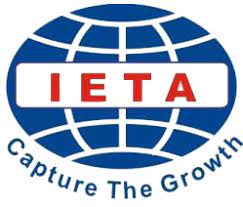Fostering Bilingual Creativity in English Poetry Classroom: A Postcolonial Creative Writing Strategy
 ), Anna Tambunan(2), Citra Anggia Putri(3), Juli Rachmadani Hasibuan(4),
), Anna Tambunan(2), Citra Anggia Putri(3), Juli Rachmadani Hasibuan(4), (1) FBS, Universitas Negeri Medan
(2) FBS, Universitas Negeri Medan
(3) FBS, Universitas Negeri Medan
(4) FBS, Universitas Negeri Medan
 Corresponding Author
Corresponding Author
Copyright (c) 2022 Lingua Didaktika: Jurnal Bahasa dan Pembelajaran Bahasa
DOI : https://doi.org/10.24036/ld.v16i2.120365
Full Text:
 Language : English
Language : English
Abstract
The study accentuates bilingual creativity as the pedagogical intervention of postcolonial creative writing strategy in poetry class through the writing of haiku and short poems. Twenty-five students in their freshmen year at the English Department were engaged in reading a culturally local text (Sumatra-Javanese ethnic poetry to compose poetry from a post-colonial perspective). The workshop's five phases exploring, inciting inspirations, drafting, editing, and peer feedback provided the student, as a novice writer, with the benefit of familiarizing themselves with character, theme, and cultural issues; developing a cognitive process to negotiate different meanings in their first and second languages; and exploring creativity to write their own poetry in the second language. The scripts written in English are the product of poetry classes, which reveal students' localized knowledge and cultural literacy. The works reflect the participants’ cultural identity, even though English is the dominant language showcased in the almost fifty poems composed by the novice writers. The existence of local languages points to the development of their bilingual creativity; students in the poetry classroom are not only able to handle the meaning in the first and second languages, but also to promote their local culture to the global world.
Keywords
References
Ahmed, Sameer. (2020). Decentring English through bilingual creative practice, New Writing. DOI: 10.1080/14790726.2020.1810279
Arshavskaya, E. (2015). Creative Writing Assignments in a Second Language Course: A Way to Engage Less Motivated Students. InSight: A Journal of Scholarly Teaching, 10, pp.68-78.
Batty, Craig., & Jennifer Sinclair. (2014). Peer-to-peer Learning in the Higher Degree by Research Context: A Creative Writing Case Study, New Writing: The International Journal for the Practice and Theory of Creative Writing, 11:3, 335-346, DOI: 10.1080/14790726.2014.932814.
Bogdan, R., & Biklen, S. K. (1997). Qualitative research for education. Boston, MA: Allyn & Bacon.
Disney, D. (2014). Exploring Second Language Creative Writing: Beyond Babel, John Benjamin Publishing Company, Available at: https://books.google.co.uk/books?id=ezTOAwAAQBAJ
Gander, Forrest. (2018). Ethical dilemmas in the translation of poetry into English, Asia Pacific Translation and Intercultural Studies, DOI: 10.1080/23306343.2018.1489462
GEOK‐LIN LIM, S. H. I. R. L. E. Y. (2015). Creative writing pedagogy for world Englishes students. World Englishes, 34(3), 336-354.
Gross, P. (2015). “Roots in the Air”: the teaching of creative writing in UK universities. Scriptum: Creative Writing Research Journal, 2(1).
Hanauer, D.I. (2012). Meaningful literacy: Writing poetry in the language classroom. Language Teaching, 45(1), pp.105–115.
Hanauer, D.I. (2010). Poetry as Research: Exploring Second Language Poetry. Writing, John Benjamins Publishing Company. Available at: https://books.google.co.uk/books?id=UiBBxu1c3zIC.
Jabrohim., Chairul Anwar., Suminto A. Sayuti. (2003). Cara Menulis Kreatif. Yogyakarta: Pustaka Pelajar.
Kim, Min Kyung., & Soyeon Kim. (2018). A poetic inquiry into learning English as an additional language: Korean learners’ perceptions through sijo, Korean poetry, Language Awareness, DOI: 10.1080/09658416.2018.1527344
Mansoor, Asma. (2013). The Recipe for Novelty: Using Bilingualism and Indigenous Literary Genres in an Advanced Level L2 Creative Writing Context in Pakistan, New Writing: The International Journal for the Practice and Theory of Creative Writing, 10:1, 52-66, DOI:10.1080/14790726.2012.742550
Pavlenko, A., & Lantolf, J.P. (2000). Second language learning as participation and (re)construction of selves. In J.P. Lantolf (Ed.), Sociocultural Theory and Second Language Learning, p.155–178. Oxford: OUP.
Qiu Xiaolong. (2019). Bilingual writing vs. translating, Asia Pacific Translation and Intercultural Studies, 6:2, 129-136, DOI: 10.1080/23306343.2019.1674568
Rosenhan, C., & Galloway, N. (2019). Creativity, self-reflection and subversion: Poetry writing for Global Englishes awareness raising. System, 84, 1-13.
Sui, G. (2015). Bilingual creativity: University-level poetry writing workshops in English in China. English Today, 31(3), 40
Suvilehto Pirjo. (2017). Messengers in the shadow: a case study in creative writing and dreams, Journal of Poetry Therapy, DOI: 10.1080/08893675.2018.1396735
Tay, Eddie. (2009). Multiculturalisms, Mistranslations and Bilingual Poetry: On Writing as a Chinese, New Writing, 6:1, 5-14, DOI: 10.1080/14790720902898699
Zyngier, S. (1994). Literature in the EFL classroom: Making a comeback? PALA Occasional Papers, 6, 3-16
 Article Metrics
Article Metrics
 Abstract Views : 360 times
Abstract Views : 360 times
 PDF Downloaded : 86 times
PDF Downloaded : 86 times
Refbacks
- There are currently no refbacks.
Copyright (c) 2022 Lingua Didaktika: Jurnal Bahasa dan Pembelajaran Bahasa

This work is licensed under a Creative Commons Attribution-NonCommercial 4.0 International License.









